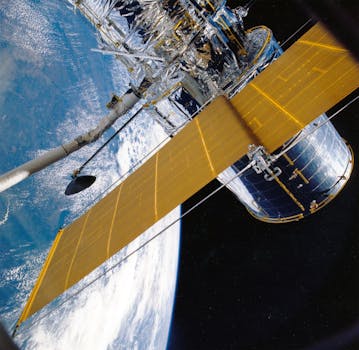From Ground to Sky: The Evolution of Satellite Telecommunications Technology

From Ground to Sky: The Evolution of Satellite Telecommunications Technology
Satellite Telecommunications has undergone significant transformations since its inception. The concept of satellite telecommunications was first introduced in the 1940s, but it wasn’t until the 1960s that the first commercial satellite was launched. Since then, satellite technology has evolved rapidly, transforming the way we communicate, access information, and navigate our surroundings.
The first satellite, Sputnik, was launched by the Soviet Union in 1957, marking the beginning of the space age. However, it was the launch of Intelsat 1 in 1965 that paved the way for modern satellite telecommunications. Intelsat 1 was the first commercial satellite, providing transatlantic communications services. This milestone marked the start of a new era in telecommunications, enabling global communication and connectivity.
The Early Years of Satellite Telecommunications
In the early years of satellite telecommunications, satellites were primarily used for fixed satellite services, such as television broadcasting, telephony, and data transmission. The first geostationary satellite, Syncom 2, was launched in 1963, followed by the first commercial geostationary satellite, Intelsat 1. These satellites operated in the C-band frequency range and provided limited capacity and coverage.
The 1970s saw significant advancements in satellite technology, with the introduction of the Ku-band frequency range. This allowed for higher capacity and smaller earth stations, making satellite communications more accessible and affordable. The first Ku-band satellite, Anik A1, was launched in 1972, providing telecommunications services to Canada.
The Modern Era of Satellite Telecommunications
The modern era of satellite telecommunications has seen tremendous growth and innovation. The introduction of new frequency bands, such as the Ka-band and Q/V-band, has enabled higher capacity and faster data speeds. The development of new satellite architectures, such as high-throughput satellites (HTS) and very high-throughput satellites (VHTS), has further increased capacity and efficiency.
Today, satellite telecommunications play a vital role in modern communication, providing connectivity to remote and underserved areas, enabling global navigation, and supporting critical infrastructure, such as emergency response and disaster recovery. The use of satellite technology has also expanded into new applications, such as earth observation, weather forecasting, and space exploration.
The Future of Satellite Telecommunications
The future of satellite telecommunications looks promising, with several trends and innovations shaping the industry. The increasing demand for broadband connectivity, driven by the growth of mobile devices and the Internet of Things (IoT), is expected to drive the adoption of satellite-based solutions. The development of new technologies, such as 5G and edge computing, will further enhance the capabilities of satellite telecommunications.
In addition, the emergence of new players, such as SpaceX and OneWeb, is disrupting the traditional satellite industry. These companies are launching constellations of small satellites, known as satellite swarms, to provide global connectivity and low-latency communications. This new approach is expected to increase competition and drive innovation in the industry.





